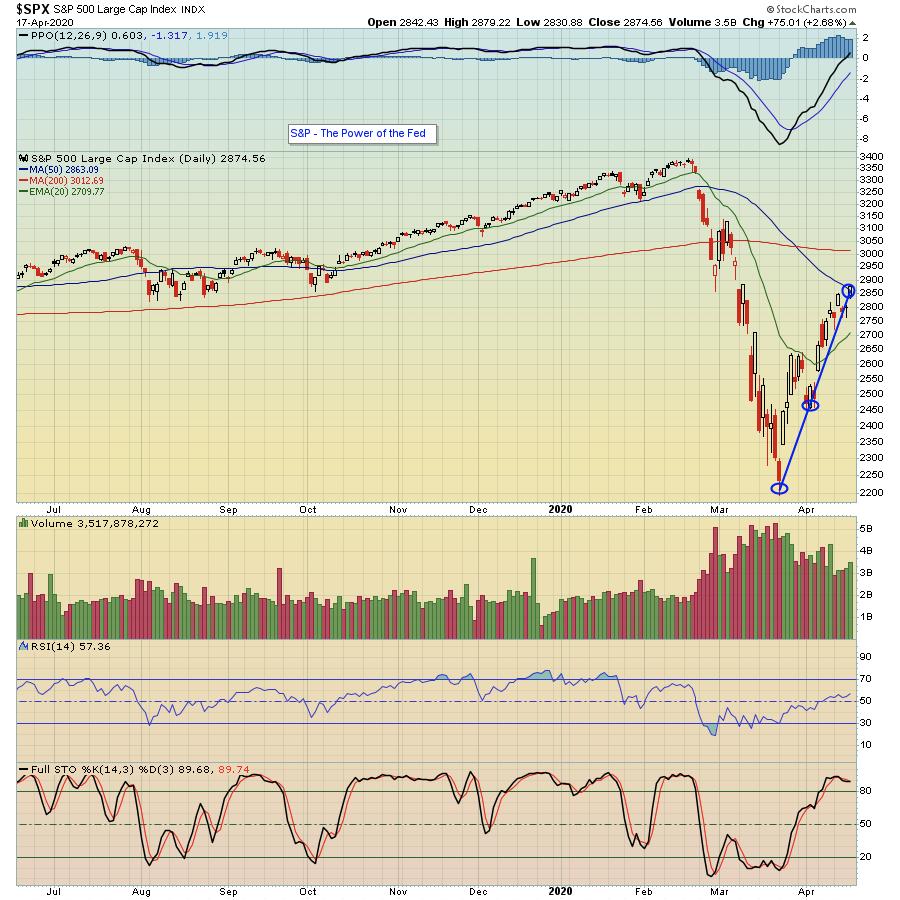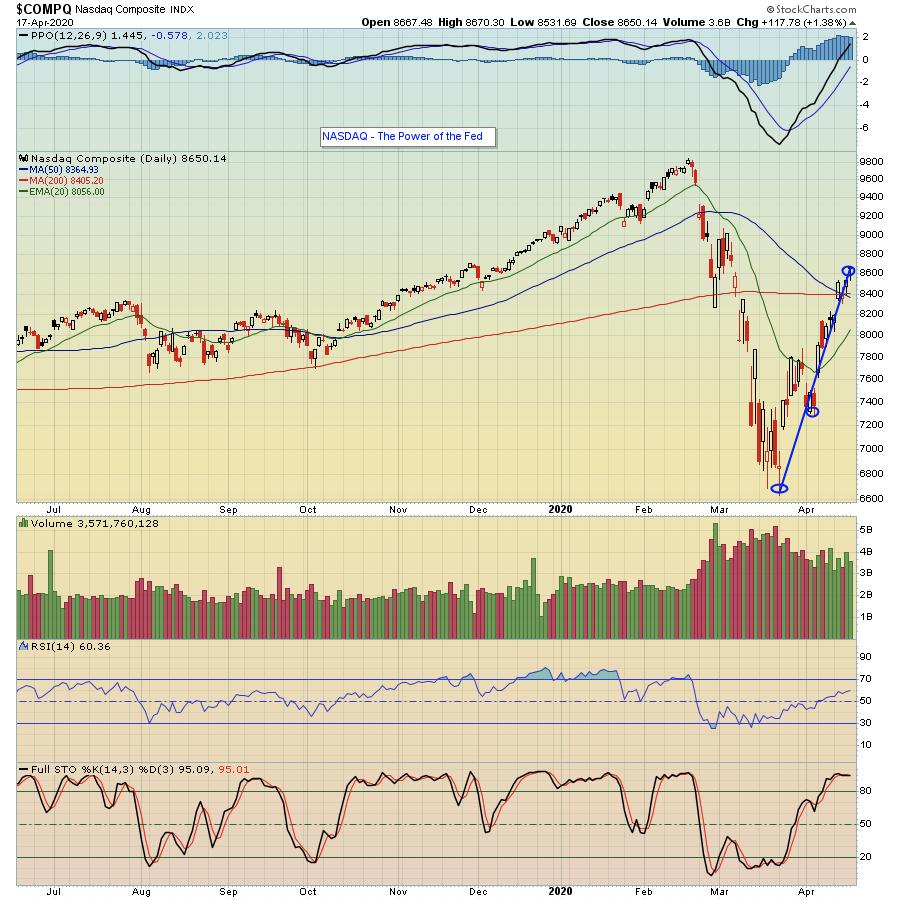Some promising news on a drug from Gilead Sciences (GILD) to help those with the coronavirus came out on Thursday after the market closed, which resulted in a big move in futures and a solid end to the week as traders got excited about the prospects of making progress on the pandemic that has paralyzed the nation. But even prior to that good news, the market had made great progress the past two weeks, especially the tech-heavy NASDAQ.
As you might recall in my last ChartWatchers article two weeks ago today, the headline read "Be Prepared to be Shocked - To the Upside". And what's happened since then? The S&P has risen by over 15% and the NASDAQ has risen by 17%, which some might consider a great year!


You might also recall that one of the main reasons I was feeling a strong rally was about to begin was this: "The US government throwing everything it's got (and more) at the economy in an effort to keep the US financial structure afloat as we move through this diabolical virus. And, if round one and two don't do the trick, watch for rounds three and four. The Fed "all in" behind the economy shows the seriousness of the situation - and it is going to be attacked full force until things turn around." So what's happened since then? Another trillion or two committed to keep the economy afloat with a promise for much more as necessary.
In fact, I will argue that the primary reason the market has held up as well as it has is the Fed. It certainly was not the millions of jobless claims reported, or the Empire State Manufacturing Survey with a record-worst reading of -78.2, or Leading Economic Indicators of -6.7 (the worst reading in its almost 60-year history) or any other recent economic report showing how bad things have gotten. Nope. It's primarily been the actions of the Fed pumping money into the economy like there's no tomorrow. And what if the Fed had not acted as decisively as they had? Well, that March 23 low on the S&P of 2191 would likely have been blown through with a reduced chance of recovery, certainly not like what we've seen these past two weeks.
Of course, in order to have taken advantage of the nice move to the upside, even with the Fed in our corner, you still needed to know which sectors/stocks to pursue - and which ones to avoid - that might provide the best reward-to-risk opportunities. For example, on the bullish side, you have stocks like Netflix (NFLX) and Zoom (ZM) for a quarantined world, while on the bearish side, the energy sector and the entertainment sector are two prime examples of what to avoid. This is why we developed our Strong Accumulation/Distribution ChartList, which currently has 354 stocks that have SCTR Scores greater than 80 and have strong accumulation/distribution lines. We also developed a Weak Accumulation/Distribution ChartList, which has 250 stocks with SCTR Scores less than 20 that should be avoided - or could potentially be short trading candidates. And EarningsBeats.com Chief Market Strategist Tom Bowley will be discussing both lists and how to strategically use them in a webinar today (Saturday, April 18) that you won't want to miss. Just click here to see for yourself how stocks in both lists performed and to learn how you can save a seat to today's timely event.
At your service,
John Hopkins
